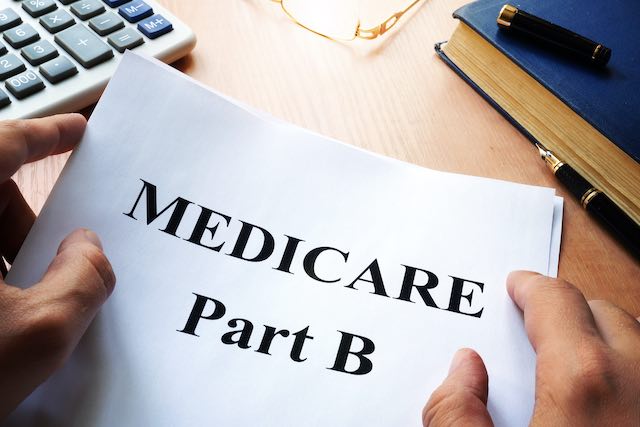November and December are an important time for Federal employees and retirees to review and decide whether to make changes to their benefits for 2021.
Medicare premiums rise for 2021
The Centers for Medicare & Medicaid Services (CMS) has announced that the 2021 Medicare Part B standard monthly premium will increase by $3.90 from $144.60 in 2020 to $148.50 in 2021.
The annual deductible for Medicare Part B beneficiaries will increase by $5.00 from $198.00 in 2020 to $203.00 in 2021.
The increases for Part B premium results in a 2.7 percent rise, and the increase in the deductible will be 2.5 percent higher.
This compares to a 1.3 percent planned rise in Social Security benefits, Civil Service Retirement System (CSRS) annuities, and Federal Employees Retirement System (FERS) annuities.
In the release announcing the increases, CMS Administrator Seema Verma writes:
“Thanks to President Trump’s leadership, Medicare Part B premiums remain steady and seniors have more plans than ever to choose from, many new benefits, and historically low Medicare Advantage and Part D premiums.”
CMS has highlighted the following items for the 2021 Open Enrollment:
- A 34 percent decrease in average monthly premiums for Medicare Advantage plans since 2017. This is the lowest average monthly premium since 2007. Beneficiaries in some states, including Alabama, Nevada, Michigan, and Kentucky, will see decreases of over 50 percent in average Medicare Advantage premiums.
- More than 4,800 Medicare Advantage plans are offered for 2021, compared to about 2,700 in 2017. Similarly, more Medicare Part D plans are available, and the average basic Part D premium has dropped 12 percent since 2017.
- Medicare beneficiaries can join a prescription drug plan that will offer many types of insulin at a maximum copayment of $35.00 for a 30-day supply. More than 1,600 Medicare Advantage and Part D prescription drug plans are participating in the Part D Senior Savings Model for 2021. People who enroll in a participating plan could save up to an estimated $446.00 a year in out-of-pocket costs on insulin. CMS has added a new “Insulin Savings” filter on Medicare Plan Finder to display plans that will offer the capped out-of-pocket costs for insulin. Beneficiaries can use the Medicare Plan Finder to view plan options and look for a participating plan in their area that covers their insulin at no more than a $35.00 monthly copay.
Medicare’s annual Open Enrollment period is currently underway and will continue until December 7, 2020. Individuals interested in learning more about the Medicare plans available in their area can compare plans at Medicare.gov.
2021 Medicare Part B Premiums
| If your yearly income in 2019 (for what you pay in 2021) was | You pay each month (in 2021) | ||
|---|---|---|---|
| File individual tax return | File joint tax return | File married & separate tax return | |
| $88,000 or less | $176,000 or less | $88,000 or less | $148.50 |
| above $88,000 up to $111,000 | above $176,000 up to $222,000 | Not applicable | $207.90 |
| above $111,000 up to $138,000 | above $222,000 up to $276,000 | Not applicable | $297.00 |
| above $138,000 up to $165,000 | above $276,000 up to $330,000 | Not applicable | $386.10 |
| above $165,000 and less than $500,000 | above $330,000 and less than $750,000 | above $88,000 and less than $412,000 | $475.20 |
| $500,000 or above | $750,000 and above | $412,000 and above | $504.90 |
Federal Benefits Open Season Begins November 9
Federal employees and retirees can review and make changes to their Federal Employee Health Benefits Program (FEHB) and Federal Employees Dental and Vision Insurance Program (FEDVIP) plans beginning on November 9 through December 14, 2020. This year, OPM has negotiated a new, seven-year contract for FEDVIP.
Federal employees may also use Open Season to elect to make pre-tax contributions to health care and/or dependent care flexible spending accounts under the Federal Flexible Spending Account Program (FSAFEDS).
The U.S. Office of Personnel Management (OPM) has announced that for plan year 2021, the average total premiums for current non-Postal employees and retirees enrolled in plans under the Federal Employees Health Benefits (FEHB) Program will increase 3.6 percent.
Federal employees and retirees can visit https://www.opm.gov/healthcare-insurance/healthcare/plan-information/premiums/ to view the plans and rates.
Combining FEHB and Medicare
Federal employees and retirees age 65 or older are entitled to Medicare Part A without paying a premium. OPM encourages eligible employees and retirees to sign up for Medicare Part A, which may help cover some of the costs that your FEHB plan may not cover, such as deductibles, coinsurance, and charges that exceed the plan’s allowable charges.
In addition to Medicare Part A coverage, some retirees choose to be covered by both a Federal Health Benefits Program (FEHB) plan and Medicare Part B.
If you do not sign up for Part B coverage when you’re first eligible, but choose to sign up later, your monthly premium may go up 10 percent for each 12-month period you could have had Part B, but didn’t sign up. In most cases, you’ll have to pay this penalty each time you pay your premiums, for as long as you have Part B. And, the penalty increases the longer you go without Part B coverage.
Federal employees, age 65 and older, who have FEHB coverage can sign up for Medicare Part B after they retire without incurring a penalty.
If you choose to sign up for Medicare Part B, and later change your mind, you can choose to disenroll.
To disenroll, you are required to submit a form (CMS-1763) that must be completed either during a personal interview at a Social Security office or on the phone with a Social Security representative. Medicare insists on an interview to make sure you know the consequences of dropping out of Part B—for example, that you might have to pay a late penalty if you want to re-enroll in the program in the future.
Some Federal retirees choose to sign up for a Medicare Advantage plan. Federal retirees who choose to join a Medicare Advantage Plan may not need FEHB coverage because the Medicare Advantage plan provides many of the same benefits.
A Federal retiree needs to carefully consider the benefits of each plan before choosing to suspend or cancel FEHB coverage. In most cases, it is better for a Federal annuitant to suspend their FEHB coverage rather than cancel it.
If you are a Federal annuitant enrolled in the FEHB Program and if you decide to cancel your FEHB enrollment, you should be aware of the consequences of canceling your FEHB enrollment including the following but not limited to:
- You CANNOT re-enroll in the FEHB Program.
- You and your enrolled family members will not be eligible to enroll in temporary continuation of coverage or convert to a nongroup contract; in addition, the 31-day extension of coverage does not apply to cancelled enrollments.
- If you die, you will not have an FEHB Self and Family enrollment for your survivors to continue, even if they are eligible for a survivor annuity.
OPM recommends that before acting you should contact your retirement system to discuss suspension and reenrollment.





